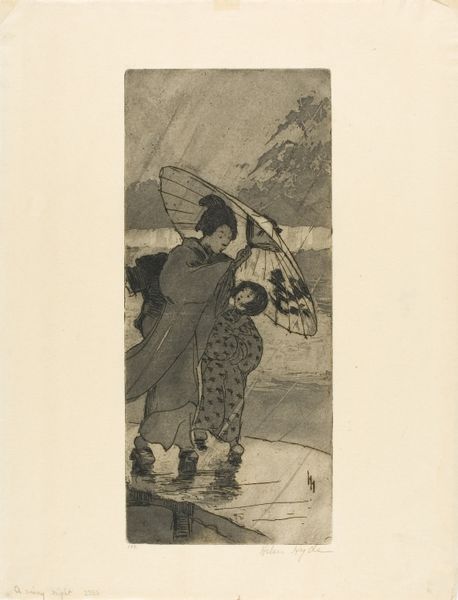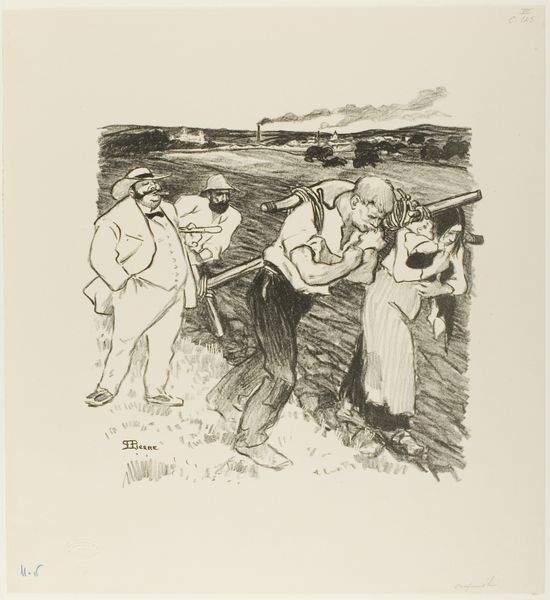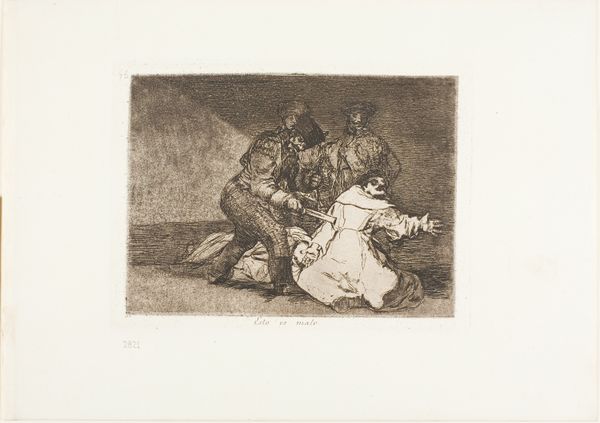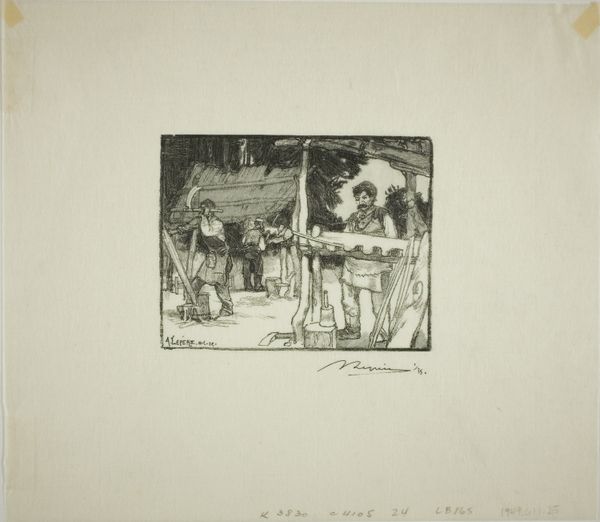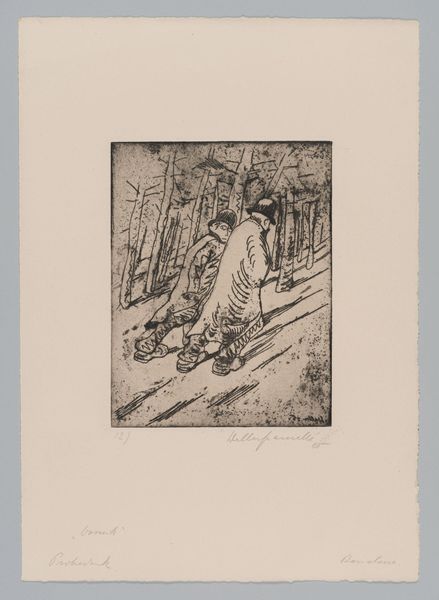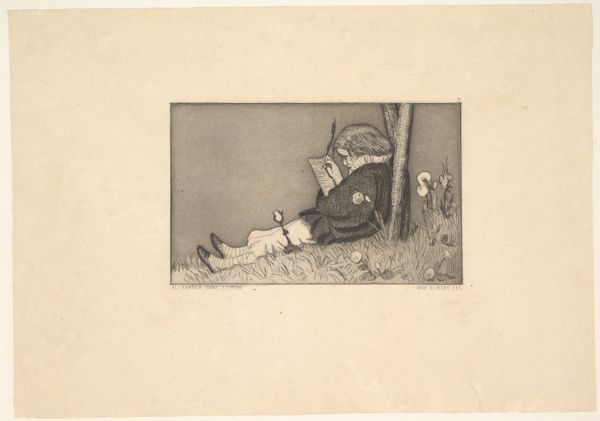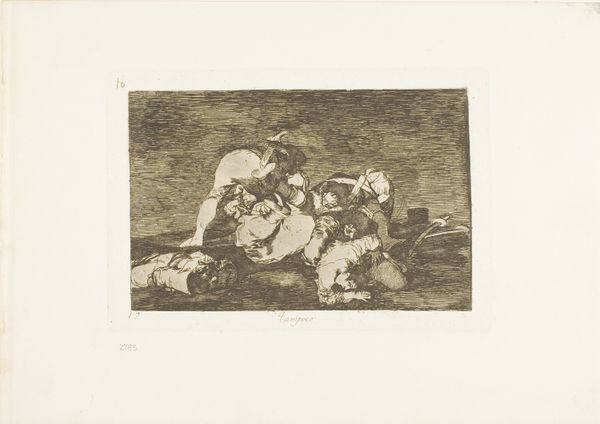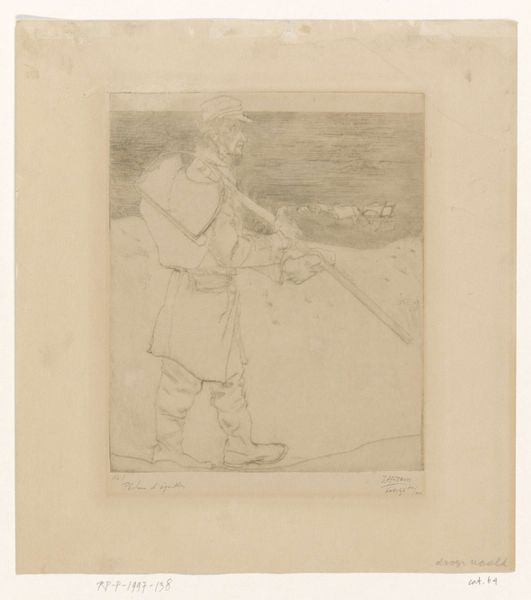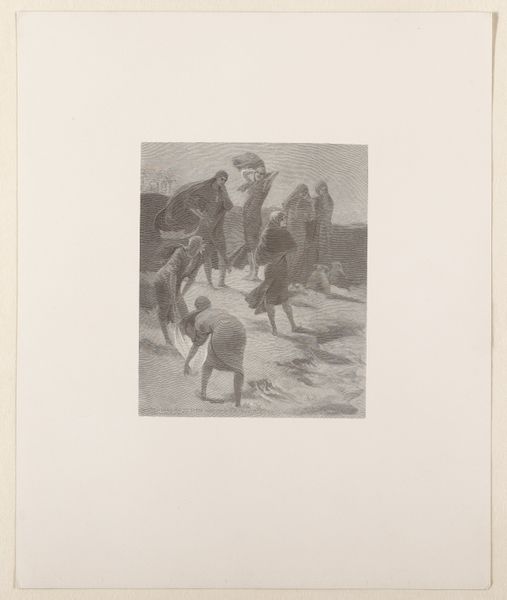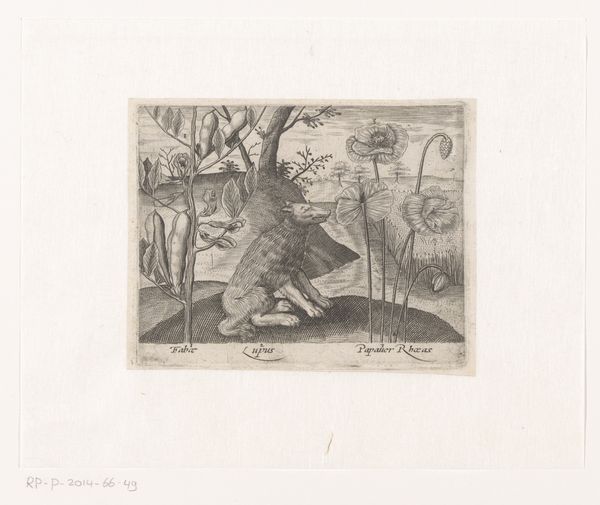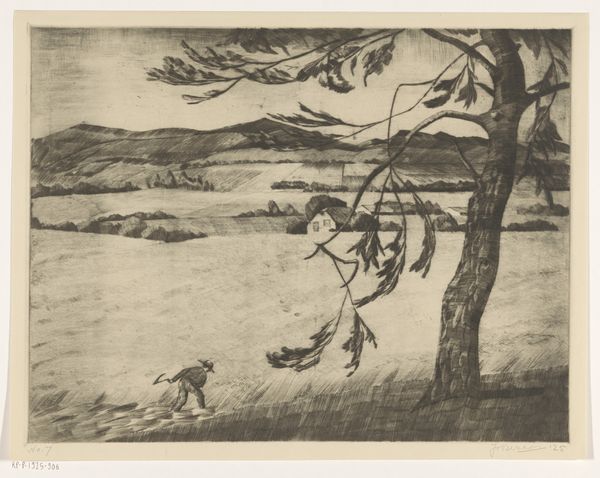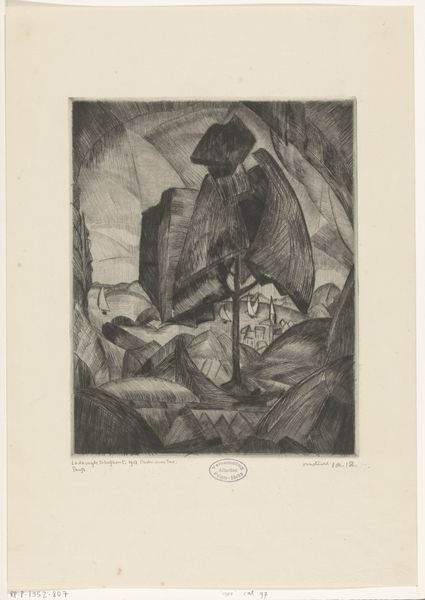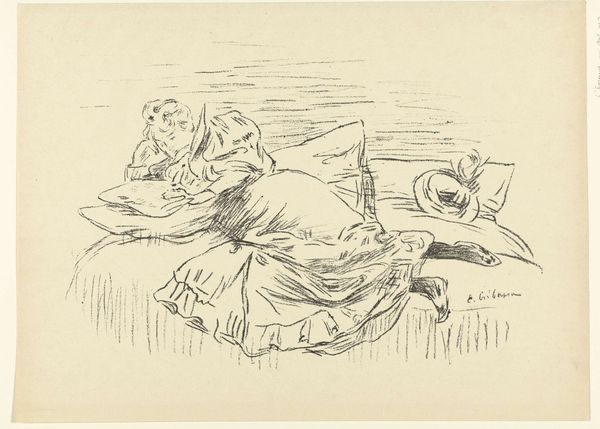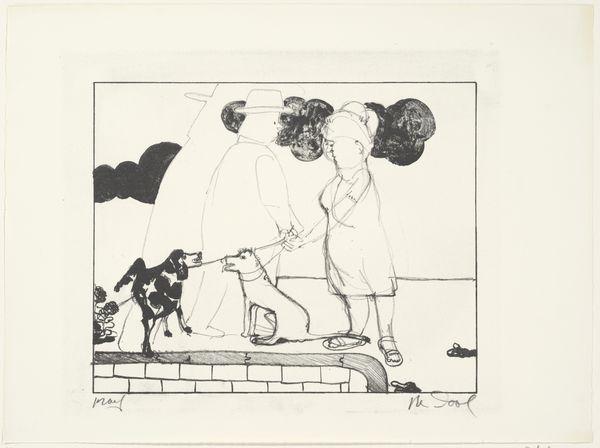
print, paper, woodblock-print
# print
#
figuration
#
paper
#
woodblock-print
#
line
#
japonisme
Dimensions: 189 × 182 mm (image/plate); 241 × 318 mm (sheet)
Copyright: Public Domain
Curator: We’re looking at "Fireflies," a 1906 etching by Helen Hyde currently residing at The Art Institute of Chicago. Editor: It's immediately evocative—the soft grays, the hazy feel. You can almost feel the humidity of a summer evening. The composition guides your eye towards the glowing lanterns. Curator: Indeed. Hyde, though American, deeply immersed herself in Japanese art and culture, particularly the ukiyo-e style. This work demonstrates her appropriation of Japanese printmaking techniques and aesthetics. What we see here is a product of Orientalism, with a complicated, if romantic, vision of Meiji-era Japan. Editor: Right, but focusing on materiality, it is essential to examine the physical labor required to produce an etching like this. Think about the biting of the plate, the inking, the press – these choices emphasize her skillful adoption of woodblock printing techniques and translating them to a very Western method. Curator: And consider the choice of subject. What does it signify to represent Japanese children participating in such a seemingly quaint ritual? How is Hyde framing Japanese childhood for an American audience in the age of imperialism? Is it reinforcing existing stereotypes or is it presenting an honest, empathetic depiction of children at play? The composition hints at Japanese modes of perception but perhaps more strongly relies on traditional visual formats from the United States. Editor: From a purely material standpoint, look closely at the subtle variations in the lines. Hyde’s controlled manipulation of the etching process brings a sense of depth and realism to the figures, although still rendered flat and silhouetted against a field of grey. Curator: Ultimately, Hyde's "Fireflies" provides us with a critical view of cultural exchange during the late 19th and early 20th centuries, complicating our understanding of the dynamics between the East and the West through the lens of artistic production and reception. Editor: Looking at it from the process out, there’s a kind of quiet reverence that emanates from the piece; it’s as much about Hyde's own painstaking act of creation as it is the depiction.
Comments
No comments
Be the first to comment and join the conversation on the ultimate creative platform.
